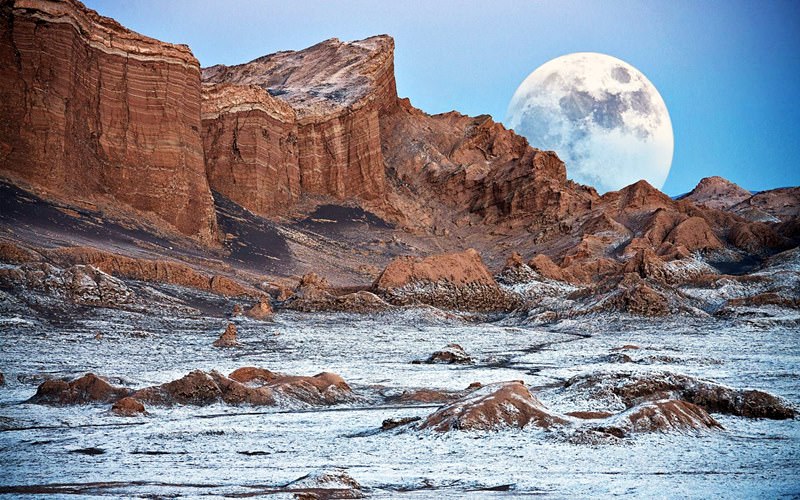What's So Special About the Atacama Desert?
By Jennifer Leman, Live Science Contributor | February 12, 2019 01:24pm ET
- click for image -
https://img.purch.com/h/1400/aHR0cDovL3d3dy5saXZlc2NpZW5jZS5jb20vaW1hZ2VzL2kvMDAwLzEwNC8yNDkvb3JpZ2luYWwvQXRhY2FtYS5qcGc=
In Chile's dry and desolate Atacama Desert, life stands still.
Credit: Shutterstock
Chile's Atacama Desert, the driest nonpolar desert on Earth, stretches across a roughly 600-mile (1,000 kilometers) tract of land wedged between the coastal Cordillera de la Costa mountain range and the Andes Mountains. The region boasts stunning geologic formations and has provided scientists with a wealth of research opportunities.
Old, hot and dry
The Atacama is the oldest desert on Earth and has experienced semiarid conditions for roughly the past 150 million years, according to a paper in the November 2018 issue of Nature. Scientists estimate that the desert's inner core has been hyperarid for roughly 15 million years, thanks to a combination of unique geologic and atmospheric conditions in the area. This perfectly parched inner-desert region spans roughly 500,000 square miles (130,000 square km), according to soil scientist Ronald Amundson of the University of California, Berkeley.
The Atacama is tucked in the shadow of the snow-capped Andes Mountains, which block rainfall from the east. To the west, the upwelling of cold water from deep in the Pacific Ocean promotes atmospheric conditions that hamper the evaporation of seawater and prevent the formation of clouds and rain. [Photos: The Haunting Splendor of Chile's Atacama Desert]
In other deserts around the world, like the Sahara, the mercury can soar above 130 degrees Fahrenheit (50 degrees Celsius). But temperatures in the Atacama are comparatively mild throughout the year. The average temperature in the desert is about 63 degrees F (18 degrees C).
More:
https://www.livescience.com/64752-atacama-desert.html



The foot of Volcan Licancabur in the Atacama Desert, northern Chile, at sunset.


Moon Valley in Atacama Desert




